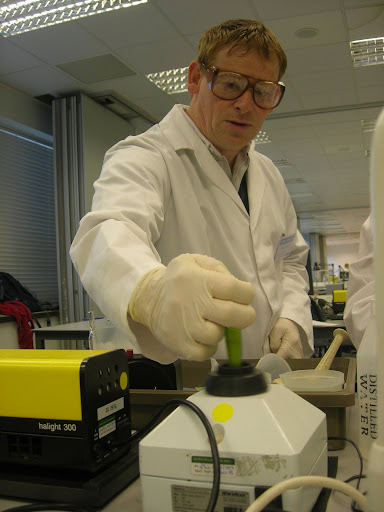Its another day out with the open university. This time its a day of talks, tutorials and other stuff happening at the Leicester National Space Centre.
We arrived at about 10, for a 10:30 start. The first problem showed up as we got there. I had thought to myself the last thing I should do is forget the piece of paper with the itinerary on it - and sure enough - that was the last thing I did - forget it!
Oh well, CR recognised me when we got to the front of the queue, and they had updated timetables so that was no problem! We also got our tickets to the various lectures.
The first talk was by Professor Barry Jones, and covered some of the block 12 material about extraterrestrial life. He covered a bit about how life might have started and the necessary conditions. He then talked about the chances of life on Mars and Europa. He also talked a bit about exo-planets and the search for earth like ones. I tried to stop myself from thinking "that would have been a good point to include in my ECA". I asked him a couple of question after the talk, as did a few others.
Then we had an S103 tutorial titled "The real Alchemy" on atomic numbers and radioactivity given by Dr Anthony Headley. It showed the difference between nuclear and chemical reactions, and the alchemists dream of changing one element into another. It was followed by a breakout session where we worked through some examples in groups. Things like, what would 14C decay into and what happens to the atomic number and mass.
After a brief lunch, we went to another tutorial on organic chemistry by the same Dr Headley. This was followed by another breakout session where we worked with chemical model kits, making up polymers. Tutors were on hand to help out and check our answers - I think our table made the longest molecule of polythene.
Then another talk by Dr Emma Taylor on crater impact research. She has the use of a very big gun to blast things at other things to try and reproduce craters on moons and similar. She also did practice drops of ball bearings into Sainsburies flour, which is apparently a lot less expensive to set up than a week long test on the big guns!
Finally we went to a talk about rocks from space by Dr Victoria Pearson. This looked at all the types of meteorites that come from space, and how you find them. She had brought along a suitcase full of samples - including a very heavy iron one which we were all much impressed by. Also she had a tiny part of a Martian meteorite, a very tiny lunar meteorite and a slightly bigger earth meteorite (having been blasted off the earth, floated around a bit and then come back into the atmosphere). She also had some very thin sections of meteorites which we could look at through polarising microscopes - from these you could work out some of the mineral content.
The talk was given in a sort of open area in the space centre which was rather noisy and subject to interruptions over the tanoy. However it was extremely good, and we attended the last of three talks she had given that day.
The organisers were a little disappointed that not many S103 students had turned up. I talked to a few people present, and there were a lot of short course students it seemed to me (on a rather unscientific survey!) who were looking to see if S103 would be a course they could do.
I got to look at a few of the 2nd and 3rd level courses I was considering - which was also useful.
skip to main |
skip to sidebar

Life studying for a 2nd time around with the Open University and others.
My Latest Blip
About Me
Topics
- A251 (7)
- astronomy (1)
- CMA (4)
- coursera (8)
- courses (40)
- degree (1)
- ECA (2)
- exam (7)
- experiment (3)
- G+C (7)
- html (1)
- intro (1)
- java (1)
- quantum mechanics (1)
- residential (43)
- S103 (19)
- S170 (1)
- S171 (1)
- S193 (1)
- S194 (4)
- S196 (1)
- S204 (21)
- s205 (18)
- S282 (17)
- s283 (8)
- S320 (12)
- S366 (11)
- S377 (10)
- SD329 (9)
- sk195 (2)
- sxr103 (3)
- SXR208 (9)
- sxr270 (7)
- sxr270tutor (7)
- SXR375 (9)
- SXR376 (8)
- TMA (49)
- tutorial (4)
- udemy (3)



No comments:
Post a Comment